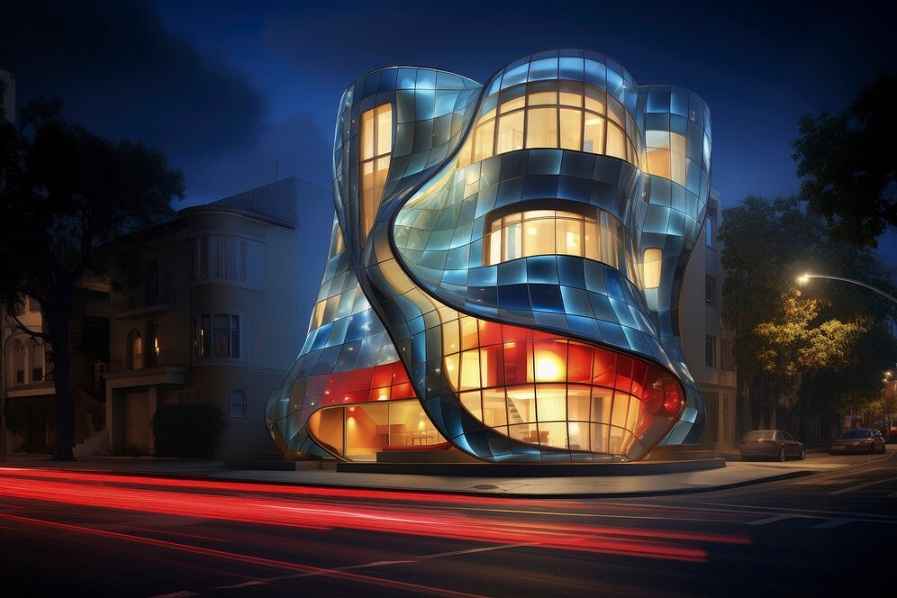Art and architecture have always been intertwined, enriching our spaces and experiences. The integration of art forms into architectural designs, referred to as “architectural art,” is not just an aesthetic enhancement but also a profound expression of cultural identity and technological innovation. As this trend gains momentum, it offers exciting possibilities to transform buildings from mere structures to immersive art experiences.
The Intersection of Art and Architecture
Definition of Architectural Art
Architectural art refers to the integration of various art forms within the design and structure of buildings. It transcends traditional decorations and serves as a foundational component that influences the form and function of the building.
Historical Perspective on Art in Building Design
Historically, art has played a crucial role in architecture, from the frescoes of the Renaissance to the intricate Islamic tile work. Buildings were not only functional structures but also canvases for artistic expression.
Benefits of Incorporating Art into Architectural Projects
Integrating art into architecture enhances the aesthetic value, boosts the building’s identity, and can even improve the psychological well-being of its occupants. It also offers a public statement, turning buildings into landmarks and contributing to community identity.
Types of Architectural Art
Murals and Wall Paintings
Murals and wall paintings transform bland surfaces into dynamic visuals, often telling stories or celebrating local heritage.
Sculptures and Installations
From freestanding pieces to integrated forms that play with the building’s lines and structures, sculptures and installations add a three-dimensional aspect to architectural art.
Stained Glass and Mosaics
These elements introduce color and light dynamics, creating spaces that change and evolve with the sunlight.
Digital and Interactive Art
Incorporating digital elements, such as LED displays or interactive sensors, modernizes spaces and offers customizable art experiences.
Functional Art
Artistic staircases or creatively designed doors combine utility with aesthetics, enhancing functionality with artistic design.
Integrating Art into Exterior Design
Facade Art and Building Wraps
Artistic facades and wraps not only beautify a building but also protect it from environmental elements and can convey messages or branding.
Outdoor Sculptures and Installations
These create engaging outdoor spaces that invite interaction and contemplation, enhancing the landscape.
Artistic Landscaping Elements
Integrative art in landscaping, such as sculptural hedges or artistic water features, adds uniqueness to the environment.
Lighting as an Art Form
Strategic lighting can transform the aesthetics of a building, highlighting features and altering perceptions with the play of light and shadow.
Incorporating Art in Interior Spaces
Lobbies and Entrance Areas
These are ideal spaces for impactful art that sets the tone for the entire building, providing a welcome that speaks volumes.
Corridors and Transitional Spaces
Art in these often-overlooked spaces can transform them into galleries, enhancing the journey through the building.
Common Areas and Gathering Spaces
Art in common areas can foster social interaction and enhance the communal feel, making these spaces more inviting.
Private Offices and Residential Spaces
In private areas, art personalizes and enriches the living or working environment, supporting identity and well-being.
Architectural Art Materials and Techniques
Traditional Materials
Stone, metal, and wood have been used for centuries in architectural art, offering durability and timeless beauty.
Modern and Sustainable Materials
Innovative, eco-friendly materials such as recycled composites and bioplastics are gaining popularity, reflecting a commitment to sustainability.
Digital Fabrication Techniques
Technologies like 3D printing and CNC milling allow for intricate designs and patterns that were once impossible or prohibitively expensive.
Mixed Media Approaches
Combining various materials and techniques can result in unique and innovative art forms that push the boundaries of traditional architecture.
Collaborating with Artists
Importance of Early Artist Involvement
Involving artists from the project’s inception ensures that art and architecture seamlessly integrate, enhancing the overall design coherence.
Selecting the Right Artist for Your Project
Choosing an artist whose vision aligns with the project’s goals is crucial for a successful collaboration.
Managing the Collaboration Process
Effective communication and clear expectations are key to managing collaborations between artists and architects.
Legal and Contractual Considerations
Understanding and negotiating copyrights, artist rights, and other legal aspects are essential to protect all parties involved.
Case Studies: Successful Architectural Art Projects
Example 1: Large-scale Public Building
A public library in Scandinavia features an exterior of interactive LED panels that react to the weather and pedestrian movement, turning the building into a living piece of art.
Example 2: Corporate Headquarters
A corporate building in the US incorporates a massive atrium with a suspended kinetic sculpture that moves with the air currents, symbolizing innovation and flow.
Example 3: Residential Complex
A residential complex in Spain uses ceramic facades that not only reflect traditional local art but also help in thermoregulation.
Challenges and Considerations
Budget Constraints and Funding Options
While budget constraints are significant, exploring various funding options, including public grants and private sponsorships, can facilitate artistic incorporation.
Maintenance and Preservation
Artistic elements require maintenance, especially those exposed to harsh environmental conditions, impacting long-term sustainability.
Balancing Aesthetics and Functionality
Finding the right balance between aesthetic appeal and practical functionality is crucial to successful architectural art.
Addressing Diverse Stakeholder Preferences
Art can be subjective, and addressing the tastes and preferences of different stakeholders can be challenging.
The Future of Architectural Art
Emerging Trends and Technologies
The future of architectural art looks promising with advancements in materials and digital technologies paving the way for new forms of expression.
Sustainability and Eco-friendly Art Integration
Sustainability is becoming increasingly important, with more artists and architects focusing on eco-friendly practices.
Interactive and Responsive Architectural Art
Interactive art that responds to environmental and human stimuli is setting new standards in architectural design.
Conclusion
Architectural art transforms buildings into more than just structures; it turns them into experiences. As we look forward, the possibilities are limitless. Let’s embrace this integration and enrich our spaces with creativity and innovation. Whether you’re an architect, a designer, or simply someone who appreciates the fusion of art and space, the journey towards integrating art into architecture is an exciting path worth exploring.


